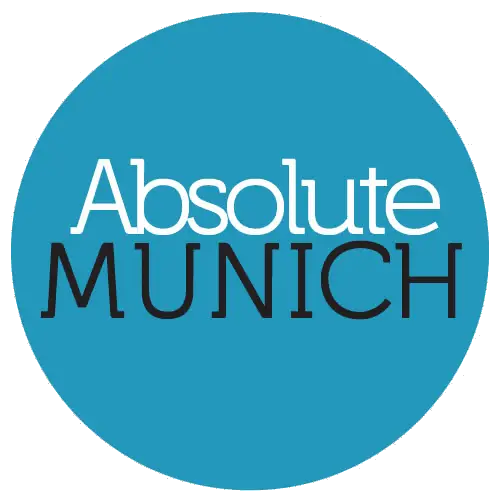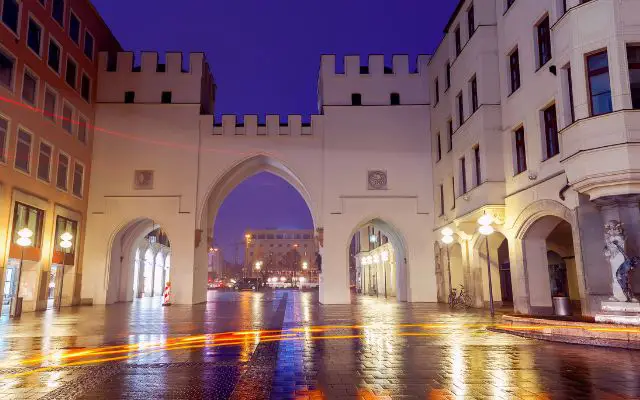Visiting Munich? Love History? If so, then a quick visit to the Karlstor, the historic west city gate at Karlsplatz, could be on the cards.
But what is Karlstor? Who built The Karlstor? How Old is the Karlstor? And would the Karlstor be a suitable addition to your itinerary on your upcoming visit to Munich?
Well in this short article, we’ll outline some of the key interesting points about this ancient monument that will answer those questions, and hopefully, aid in your decision to come and check it out!
We hope you enjoy the read so let’s go!
What is the Karlstor?
The Karlstor is one of Munich’s ancient city gates that was incorporated into the defensive city walls that once surrounded the city.
Originally there were five different city gates that gave access to Munich. Karlstor, Isartor, Sendlinger Tor, Angertor and Schwabinger Tor.
Whilst the Angertor and Schwabinger Tor have long been demolished, the other three remaining city gates still stand proud as a testament to the city’s fortunes and are an interesting peek into the city’s long and turbulent history.
The Karlstor was Munich’s main city gate and is on the west side of the city, whilst the Isartor is in the east and Sendling Tor in the south-west.
When Was Karltstor Built?
The Karlstor was built, based on historical records, somewhere between 1285 and 1302.
Originally known as the Neuhauser Tor, this Munich City Gate was constructed to meet the bridge that spanned the city moat.
Neuhauser was the farming village just to the west of Munich and was the route via which most travellers took in order to enter the city as it was the most developed road at the time.
Part of a larger structure of city defenses, the Karlstor has been built, enhanced and rebuilt on numerous occasions. The adjoining city walls were demolished in 1791 to make way for city expansion, and buildings were constructed either side of the Karlstor Gate.
It was at this point that the then ruler and Elector and Duke of Bavaria Charles Theodore (Karl is the German version of Charles), altered the name from Neuhauser Tor to Karlstor in honour of himself. Popular he was not!
Again, In 1861, the Karlstor Gate underwent further remodeling to give it a more gothic appearance, finally being completed again in 1902.
As with many buildings in Munich during the Second World War, the construction attracted significant damage during the period, and the Karlstor Gate reproduction we see today is a far more simplified form of its original structure.
Nevertheless, it still gives an imposing and awe-inspiring glimpse into medieval life in Germany, and it’s easy to imagine crossing a bridge across a moat here in order to gain entry to the old Medieval City of Munich some several hundreds of years ago.
What To See at The Karlstor
We’re not going to engage in any sort of deception here and try to convince you that the Karlstor is one of the great monuments of our time, but there are certainly some aspects of interest to the structure that would certainly engage any history buff.
As well as the historical element of the gate itself with its redeveloped gothic style 18th century towers, there are some other areas of the Munich Old Town very close that warrant attention on your Altstadt City Walk (Old Town City Walk).
Within the structure itself you’ll spot three bronze statuettes that were originally part of the fish fountain in Marienplatz. Although overall a fairly plain structure as old city gates go, there are a number of other statues and busts set into its walls as well which are often being photographed and sketched by art enthusiasts.
Just inside the gates on Neuhauser Straße there can be found a somewhat strange comedic fountain of a boy (Brunnenbuberl) and when iced up in winter takes on a whole new life. The fantastical ice that develops is well worth seeing and definitely worth a picture.
Karlsplatz historical square (another of those places named for vanity by Charles Theodore) just to the east of the gate itself, is naturally worth a look, with a stunning fountain making up the centerpiece of the square.
Meanwhile, other local attractions include the Alter Botanischer Garden with its Neptune Fountain, the Justizpalast (Palace of Justice) landmark, or the MUCA Museum für urbane und zeitgenössische Kunst (Museum of Contemporary Art) is just a few streets to the South East.
The massive Frauenkirche Munich, the city’s skyline icon is a couple of hundred meters to the east of Karlstor and Maximiliansplatz is a couple of minutes walk to the north-east.
How to Get to Karlstor Gate?
If a visit to the Karlstor Gate is on the cards for your time in Munich, getting to the gate is fortunately quite easy.
Several different buses pull to a stop near the gate itself, or alternatively, the Karlsplatz Stachus underground station (U-Bahn) and tram stop are just on the opposite side of the road from the gate.
Walking to the Karlstor München is the preferred way to get to the monument, and just on the other side of the “gate” is where the major downtown pedestrianised zone starts (or perhaps ends, based on your perspective).
See our Maps Of Munich article for all the relevant information including printable pdf maps, and also our Getting Around Munich article that details getting around the city.
Karlstor Location Map
Karlstor: Our Take on this City Gate
If you’ve been planning a visit to Munich, stopping by at the Karlstor Gate could be a good option to consider for your trip and can be an excellent way to take a glimpse into the past on your visit or tour to Munich.
If you arrive in the area from the underground U-Bahn station, the gate serves as an entrance to the wonders of Munich Old Town. Whether you’ve decided to come to this part of the city for shopping, for festivals, or just to soak in the city’s history, then this is a great place to start your old town journey.
The area behind the gate is always crowded with people eager to explore the mysteries of this fabulous city and with there being so many things to do in the immediate area, it’s easy to miss the intricacies of the Karlsotor, but those with an eye for detail will no doubt spot them.
Looking like something from a Grimm fairy tale, this is one of the most photographed and Instagrammable locations in Munich and personally, we love the area as it’s historical, vibrant and bustling.
Hopefully, you’ll be inspired to discover more about the Munich Karlstor yourself, and that this article will help you get the most out of your experience here.
Cheers and thanks for reading.

